Educational Outreach
One of CSU-CHILL's goals is to support educational interests. This includes the Research Experience for Undergraduates (REU), supporting classroom activities for undergraduate- and graduate-level Atmospheric Science and Engineering programs, remote demonstrations and virtual radar tours, field trips to the radar site and remote data access. In addition, student research activities are conducted at the CHILL site.
Research Experience for Undergraduates
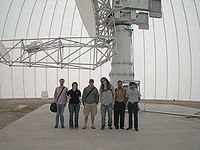
Founded and supported by the National Science Foundation (NSF), the Research Experience for Undergraduates (REU) program is designed to provide valuable educational experiences for undergraduate students through research participation. Working closely with faculty and researchers at host institutions around the world, REU projects involve undergraduates in meaningful ways in ongoing research, including opportunities for laboratory visits, writing workshops, and other activities to enhance the research experience. Students are granted stipends and, in many cases, assistance with housing and travel.
The CSU-CHILL REU annual summer program provides an opportunity for undergraduate students to conduct research focused on the Radar Facility and its revolutionary weather sensing technology. Students are assigned an individual mentor, who supervises the students' daily activities, and monitors weekly progress. This program solicits applications from Physics, Engineering, Computer Science and Atmospheric Science disciplines.
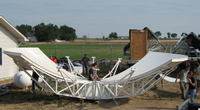
Examples of research topics assigned to previous REU students are
- Antenna pattern evaluation for the CSU-CHILL Offset Feed Antenna
- Implementation of radar signal processing algorithms on Graphics Processor Units (GPUs)
- Real-time implementation of hydrometeor identification for the VCHILL system
- Verification of offset-feed antenna performance through meteorological observations
Interested students should contact the program coordinator through the ECE website.
Classroom Activities
The CHILL facility provides access to a rich collection of radar data in support of classroom activities. Selected interesting meteorological cases of dual-polarized observations of meteorological phenomena are available for incorporation into coursework. A casebook, of notable radar observations, sorted by event type or project is available.
Upon request, data sets in Universal Format (UF) or netCDF format can be made available.
Tutorials, with guided interpretations of selected dual-polarized radar cases have been prepared in support of specific courses, at the request of the course instructors. Examples of these tutorials may be found in the Radar Tutorials section of this website.
Faculty members have included CSU-CHILL data into courses taught in both the Atmospheric Science and Electrical and Computer Engineering Departments at CSU:
General questions / requests regarding the inclusion of CSU-CHILL data into other course presentations may be directed to the Facility Manager.
The CSU-CHILL facility has been used as an integral part of short courses conducted at various Conferences. Examples of past courses include:
- Applications of Polarimetric Radar (Fifth European Conference on Radar in Meteorology and Hydrology, 30 June - 4 July 2008, Helsinki, Finland)
- Applications of Polarimetric Radar (36th Conference on Broadcast Meteorology, 25-29 June 2008, Denver, CO)
- Radar Calibration Workshop (87th AMS Annual Meeting, 14 January, 2007, San Antonio, TX)
Prospective instructors who wish to use CSU-CHILL data and informational articles may contact the Facility Manager.
Virtual Radar Tours
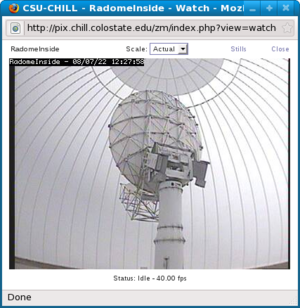
The CSU-CHILL Radar is available for Virtual Radar Tours, where users from a remote site can get a tour of the radar facilities through Internet Streaming Video. A live video feed is always available from within the radome. Additional cameras may be set up on request, and access provided to these cameras through the same video system when conducting the radar tours.
A typical virtual tour includes the view from both inside and outside the radome, close-up views of the antenna structure and a walk-around of the transmitter/receiver subsystems. A brief presentation on the radar is usually included as well.
Prospective users who wish to tour the CSU-CHILL facility via the Internet may contact the Facility Manager for details.
On 14 October 2008 a demonstration of the virtual radar tour technology was conducted on the main CSU campus at the request of the Institute for Learning and Teaching's Master Teacher Initiative. The various web-based remote video imagery and video conferencing systems that are currently being used for the CHILL radar virtual tours should be applicable to a variety of other distance learning applications.
Educational Field Trips
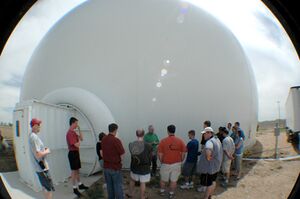
The CSU-CHILL Radar site is generally open to visitors, and has hosted several educational field trips from various organizations (local AMS chapters, etc.) and educational institutions.
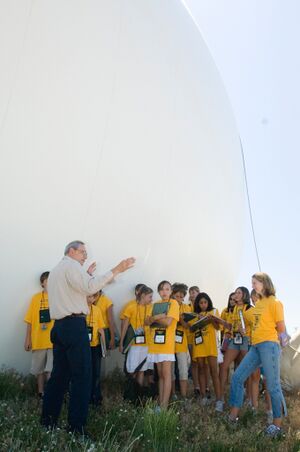
A typical radar tour consists of:
- A visit to the radome and antenna
- A visit to the radar transmitter/receiver trailer
- Introduction to the radar hardware
- A visit to the operations trailer
- Replay of data from interesting meteorological cases
- In the event of cooperative weather, live demonstration of the radar
Due to physical space restrictions in the radar equipment areas, it is best to limit tour group sizes to approximately 20 people.
Please contact the Facility Manager to schedule field trip activities at the radar site.
VCHILL
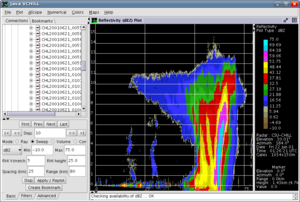
The Virtual CHILL, or VCHILL system allows remote users to display data both from the CHILL archives as well as from realtime operations. The Java VCHILL display client software is a cross-platform tool to allow radar access from a variety of computer systems running various operating systems.
The VCHILL Bookmarks feature is a set of educational write-ups that highlight interesting meteorological cases, along with web-links to view the data with the VCHILL client. The casebook entries also include VCHILL links.
More information can be found on the VCHILL section of this website.